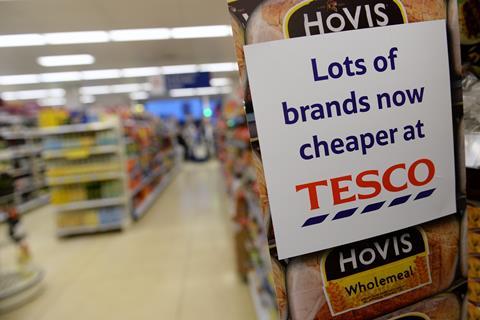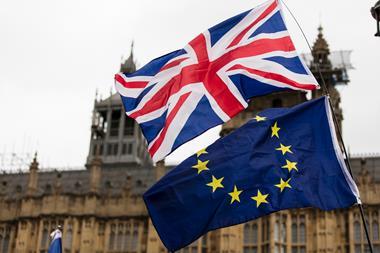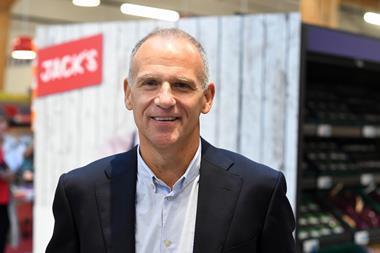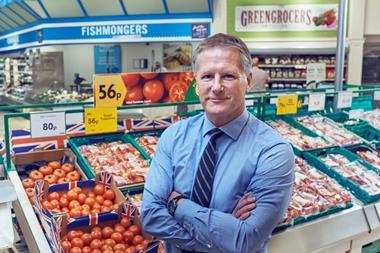After sterling slumped to a two-year low as the threat of a no-deal Brexit looms ever larger, Retail Week analyses what retailers can do to mitigate the pain of a weak pound.
New prime minister Boris Johnson’s premiership has gotten off to a rocky start. Less than a week after being handed the keys to 10 Downing Street, the value of the sterling hit a 28-month low of $1.21 against the American dollar and also slid against the Euro, falling as low as €1.08 at one point.
In July alone, the pound has dropped by more than 4%, representing the worst month for Britain’s currency since October 2016.

The plummet has been driven by the bellicose rhetoric of Johnson and his new-look cabinet. The PM has repeatedly said the UK will leave the EU on October 31, “come what may”.
With just three months remaining to agree on a deal with Brussels, fears are mounting that the UK is headed for a disorderly Brexit on Halloween – and the markets have reacted accordingly.
As Retail Economics chief executive Richard Lim explains, the latest slump is “reflective of the risk of a no-deal increasing. But it isn’t necessarily reflective of the market pricing in no deal with any certainty.” That leaves the door open for a further slump, should a no-deal Brexit occur, at a time when retailers are already facing into rising sourcing costs in the wake of a post-EU referendum currency crash.
So, how should retailers be reacting in a bid to offset additional supply chain costs both now and in the longer term?
Hedging your bets
One way of mitigating the damage of fluctuating currencies is for retailers to take out hedging contracts, which effectively fix the rates they are paying for currencies for the duration of the agreement. Hedging is like taking out an insurance policy – making an investment to guard the value of an asset against future changes.
Hedging is used by many businesses to eliminate any risks they might encounter when trading overseas. If you import goods to the UK from the USA, you would convert pounds to dollars when paying invoices. Hedging allows you to set your pricing for a year in advance based on supplier costs and the value of the dollar at the same time.
Retailers will likely be protected from the most recent slump in the value of sterling through existing hedging arrangements, so the full ramifications of the latest fall should not hit businesses immediately. Any shock from currency fluctuation tends to take two or three years to fully filter through to the consumer in the form of higher prices.
“We’re worried about what happens afterwards – worried about things such as tariffs and further devaluation of the pound”
Roger Whiteside, Greggs
As British Retail Consortium economist Liliana Danila says: “Most retailers are protected in the short term against changes in the currency due to using hedging contracts. However, they won’t be protected in the long term.
“That’s what we saw with the slump post-referendum. While the pound dropped immediately, we only saw prices increasing seven to 12 months later for retailers, after many of their contracts had expired.”
While most retailers will be insulated against the weaker pound now, the effects of this latest slump may well not be felt for another year. And as sterling continues to fall, future hedging agreements may have to be struck on less favourable terms, particularly if Britain falls off a no-deal Brexit cliff.
Signing shorter hedging deals post-Brexit could become an appealing option, in the hope that the currency will recover sooner rather than later.
Sharing the pain
Hedging aside, there are a number of other ways retailers can look to mitigate the costs that come with a weakened pound.
The boss of one fashion retailer suggests there are conflicting strategies businesses can opt to pursue. Retailers can either leverage their relationships with suppliers to share the cost burden or switch suppliers in a bid to secure lower prices. Then there is the conundrum of whether to pass additional sourcing costs on to the customer through increased prices or to keep prices constant and absorb a short-term margin hit to maintain sales volumes.
They suspect retailers will turn to a mix of these solutions, depending on a number of factors, such as their overarching goal in the market. Those bidding to increase market share may take the bottom-line pain, while businesses focusing on profitability are more likely to shift a portion of the burden on to consumers.

Lim agrees and says retailers, particularly those operating in the grocery sector, can also look to claw back margins in other ways. He highlights the “re-engineering of packet sizes” – a strategy known as “shrinkflation” – and a move towards stocking “fewer product lines to try to streamline and gain efficiencies” as two ways retailers can achieve that aim.
Britain’s biggest retailer Tesco has been using a combination of such approaches under Dave Lewis to good effect. It has slashed the number of SKUs it stocks in stores and has built closer relationships with its suppliers, taking more of the crop from farmers in order to achieve lower unit prices.
In the fashion space, Joules has implemented its ’total retail’ model, which links all of its routes to market – ecommerce, stores, concessions, events and online marketplaces – and fully integrates its supply chain into the wider business. This saw the fashion brand post soaring underlying profit and group revenues in its most recent full-year results.
While some brands across the grocery and fashion markets have already done the internal, strategic work to guard themselves against outside market forces, a banking insider suggests many retailers will again be forced to look below the profit and loss line to find savings.
They say: “If currency is hurting you at the gross profit line that’s ultimately out of your control. In order to save profitability, you need to be looking below the gross profit line. That’s restructuring costs, slashing head office costs, looking at every line of the P&L.
“But the reality is retailers have already been doing that for the last five years. There isn’t a lot of low hanging fruit left.”
Uncertainty continues
The other problem for the retail sector, as for business more generally, is the uncertainty around the final endgame for Brexit.
The banker believes the pound could fall as low as $1.10 in the event of no deal, or slingshot as high as $1.45 if Johnson can secure an agreement.
Lim believes the odds on the government reaching a deal with the EU remain better than 50/50 but admits “if we do fall out with a hard-Brexit no deal by the end of October, I certainly think there is a lot further for sterling to fall against a basket of other currencies”.
Greggs boss Roger Whiteside says, as a result, he is more concerned about what will happen to the economy after Brexit than whether the UK leaves with or without a deal.
Speaking as the business unveiled half-year results this week, he said: “We’re worried about what happens afterwards – worried about things such as tariffs and further devaluation of the pound.”
While these are concerns shared by many across the industry, they could present an opportunity for some retailers.
The banking source suggests net exporters, such as Asos and Boohoo, will be “naturally hedged” by selling much of their product in foreign currency. As the pound weakens against other currencies, sales made to shoppers in overseas markets “will be worth more in pound sterling terms”, they say.
For Lim, a weak pound will bring more cash-rich tourists to the UK, boosting luxury categories such as jewellery and watches.
He also suggests a no-deal Brexit – and the implementation of the government’s temporary tariffs – would create a positive bounce for retailers in sectors that import much of their product from outside of the EU.
“Businesses are crying out for certainty and we haven’t had any kind of certainty for the last three years”
Richard Lim, Retail Economics
“Tariff costs will go up in some areas, but they will come down in others,” Lim says. “The cost of sourcing goods from the EU will increase, but from other areas like China and the US, tariff costs will actually fall. It depends on what sector you sit in and where you source your products from. For some, like electricals and ceramics, there will be a benefit.”
However, Lim reiterates that what retailers – and the wider economy – craves more than anything is clarity.
“Businesses are crying out for certainty and we haven’t had any kind of certainty for the last three years,” Lim says. “Whether that is the certainty over a managed exit or the fact we do have a deal, my feeling is that businesses are holding back on investment, holding back on big capital expenditure plans, waiting for certainty.
“If we do have a deal by October, a lot of businesses in the UK will turn on the tap of that investment. That will take a while to filter through to the economy, but we are likely to see a boost to that and a boost to confidence once we have some clarity.”
With such certainty from the government far from forthcoming, retailers must be proactive in managing their cost bases and supply chains to mitigate the impact of a falling pound – and prepare as best they can for the likelihood of a further hit come Halloween.
Is Boots boss Seb James right to be worried about a recession?
- 1
- 2
 Currently reading
Currently readingAnalysis: How retailers can avoid a pounding from a weak sterling



























No comments yet